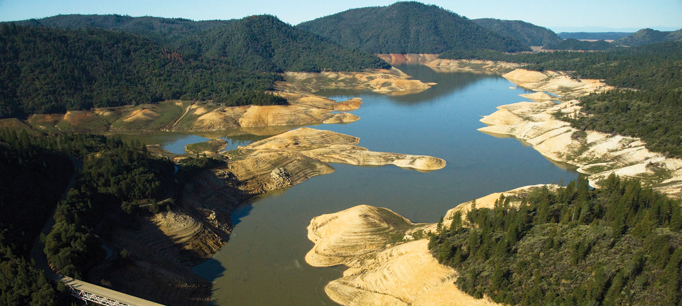This is part of a continuing series on the impact of the drought.
In a recent California WaterBlog post, Peter Moyle of the University of California, Davis—a frequent collaborator on PPIC projects—highlights an issue not much discussed in the context of this drought: we ignore fish and wildlife at our peril. California is home to 122 different species of native fishes, including 32 kinds of salmon and trout. These fishes are part of the unique natural heritage of California and, as Moyle points out, most are on a trajectory toward extinction. A poorly managed drought can hasten this process.
State and federal laws that protect endangered species reflect the high value society places on native biodiversity. The sweeping Delta Reform Act of 2009, passed by bipartisan majorities, went a step further, placing ecosystem health on par with water supply reliability. Above all, history shows that failure to manage fish and wildlife well during a drought can have very expensive long-term consequences for water management once the rains return.
So what, if anything, is being done for fish in this drought?
The short answer is “not much.” Most discussion at both the state and federal levels has focused not on whether to relax environmental standards, but on how much to relax them. In the coming weeks many petitions will be filed with the State Water Resources Control Board for exemptions from water quality and flow standards. The board has already exempted the Central Valley Project and the State Water Project from meeting flow standards for the Sacramento–San Joaquin Delta, which is home to many endangered fishes, including salmon and steelhead. The emergency drought legislation making its way through the state legislature includes significant sums to provide relief to communities hard hit by the drought, but very little to help reduce stress on the environment. On the federal level, the legislation pending in the House would reduce protections for the environment, while the Senate bill—introduced by California’s two U.S. senators—offers little to improve conditions for fish.
Moyle points out that although native fishes adapt well to drought, they are hampered by the many modifications we have made to our rivers, the way we manage water, and our policies regarding fish harvests and hatcheries. He offers some well-known prescriptions for drought management and some novel ideas, including trucking fish to cool water sources and establishing fish triage panels with the authority to allocate water to keep fish alive through a drought. Equally important, his post reminds us that the actions that help the environment most during a drought are those taken long before the drought begins.


